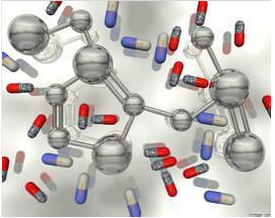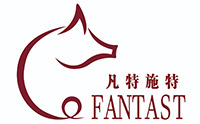23
2021-12
The Biological Role of Zinc (Part 1)
author:
source:
The Biological Role of Zinc (Part 1) Trace Elements
Zinc is an essential trace element for the body. In 1933, Todd et al. first reported that zinc is an essential nutrient for rats. Afterwards, Tucker and Salmon reported that zinc deficiency caused skin damage in pigs, and O'Dell et al. recognized the essential role of zinc in chicken growth. In the past few decades, the understanding of the biological functions of zinc has developed rapidly.
Absorption of Zinc
Zinc is mainly absorbed in the duodenum and jejunum, with less absorption in the ileum, but there is no consensus on the specific contribution of each intestinal part to absorption (Solomons and Cousins, 1984). The absorption of zinc mainly involves two pathways: carder mediated absorption and non mediated diffusion absorption, both of which are influenced by the concentration of zinc in the intestinal lumen (Cousins, 1989). Most zinc absorption occurs through carrier mediated pathways, especially when the concentration of zinc in the intestinal lumen is low. When the concentration of zinc in the intestinal tract is high, such as in the case of a high zinc diet, zinc can be absorbed through non mediated mechanisms. As food is further digested in the small intestine. Zinc is presented to intestinal epithelial cells in the form of smaller zinc binding ligands, and is rarely free zinc. In this case, solubility seems to be an important factor affecting the uptake of zinc by intestinal epithelial cells. In addition. Vesicular transfer of zinc is also considered a mode of intercellular zinc transport.

Metabolism of Zinc 2
Zinc binding protein - metallothionein (MT) is a regulatory factor in zinc metabolism. Dietary zinc induces the synthesis of metallothionein through the transcription regulated metal response element (MRE) and metal binding transcription factor 1 mechanism (MTF. 1). The regulation of metallothionein expression by diet seems to form an automatic regulatory system, in which an increase in metallothionein synthesis is associated with an increase in intracellular bound zinc. Metallothionein may act as a metabolic buffer pool for zinc in the body, regulating the levels of free zinc ions and coordinating the zinc pool in cells that respond to hormones and diet. Dynamics studies also indicate that the decrease in plasma zinc is consistent with the synthesis of metallothionein and the binding of zinc in the metallothionein kinetic region. Regulating the transport of zinc into and out of cells may enable cells to further adapt to different levels of zinc intake without the need for metallothionein.
The small intestine plays a crucial role in regulating the homeostasis of zinc metabolism through the absorption of exogenous zinc from the diet and the retention of endogenous zinc in the body. The regulatory process responds to changes in the body's zinc nutrition status, but is also influenced by changes in dietary factors that can affect exogenous zinc absorption. Diarrhea and malabsorption can also affect the regulatory process.
Conclusion:
At present, the feed grade zinc sulfate produced by Fanteste in the market has a good effect and is an excellent choice for feed companies.
Contact number 023-49626789
Lastest Literatures
2023-04-03
The relevant characteristics of enzyme preparations and their application in animal feed
Feed contains various anti nutritional factors, which can limit the release of nutrients in the feed. In addition, the lack or absence of digestive enzymes in the animal's gastrointestinal tract can lead to a lower digestion rate of feed, affecting the utilization rate of feed and hindering the healthy growth of animals.
2023-02-13
Process nutrition and quality management of chicken powder
Animal protein raw materials include chicken meal, pork meal, fish meal, meat and bone meal, animal by-products
2022-12-14
The mechanism of action of anti nutritional factors and their effects
Antinutritional factors mainly reduce the body's utilization of nutrients such as protein and energy by consuming more endogenous proteins
2022-12-12
Design and precautions of feed formula
Feed products should have the following characteristics: nutrition, physiology, marketability, safety, economy, and practicality.



